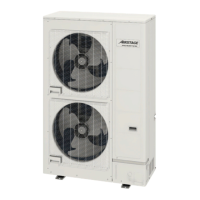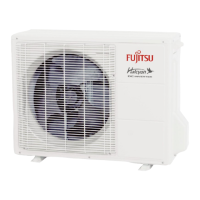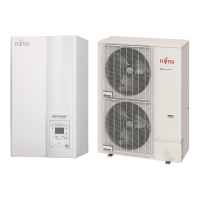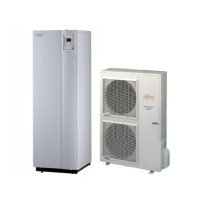
Do you have a question about the Fujitsu Airstage AOU120RLAVL and is the answer not in the manual?
Read manual, follow steps, observe codes, heed notices, and understand hazard symbols for safe installation.
Warnings against non-specified parts, refrigerant leakage, fire hazards, electrical safety, and fan hazards.
Cautions regarding installation locations, avoiding specific environmental hazards, and proper draining.
Safety and handling guidelines for R410A refrigerant, including pressure and tool requirements.
Ensure the installation location can support the unit's weight and prevent tipping.
Ensure the installation location can support the unit's weight and prevent tipping.
Ensure correct drain work to prevent water dripping and furniture wetting.
Ensure adequate space for installation, maintenance, ventilation, and piping.
Specifies limits on total refrigerant, pipe lengths, height differences, and total refrigerant amount.
Unit is designed for R410A; do not use other pipes; proper selection ensures performance.
Use nitrogen gas during brazing; avoid flux to prevent oxidation and corrosion.
Illustrates connection methods for separation tubes and highlights good/prohibited practices.
Caution to avoid panel deformation; remove burrs and apply rust paint to hole edges.
Do not use mineral oil on flared parts; blow nitrogen gas during brazing.
Remove pinch pipe only after internal gas is fully drained to prevent piping cracks.
Seal pipe holes with putty; avoid sharp bends; cool 3-way valves during brazing.
Wiring connections must be performed by qualified personnel following all safety specifications.
Ensure power is OFF, perform earthing, use specified breakers, and avoid modifying cables.
Select cable/breaker per local regulations, ensure voltage drop is <2%, and use GFEB breakers.
Use correct wiring practices for transmission cables, avoid twisting or crossing wires.
Specifies requirements for transmission cable type and size.
Outlines rules for transmission cable length and network segment connections, use of Signal Amplifier.
Provides connection diagrams and step-by-step instructions for wiring the system.
Step-by-step procedure for wiring the system, including cable clamping and torque settings.
Identifies terminal positions and describes how each input terminal affects unit operation.
Details external output terminals for monitoring operation and error status.
Locates field setting switches on the outdoor unit PC board for configuration.
Explains DIP switch settings for various functions, including mandatory SET 5.
Instructions for setting the terminating resistor for network segments to ensure communication.
Setting the rotary switch (REF AD) for refrigerant circuit address on the master unit.
Crucial check for proper indoor unit connection before test run; mandatory for normal operation.
Procedure for conducting the test run operation, including setting cooling/heating modes and safety checks.
List of error codes and their corresponding descriptions for troubleshooting various system issues.












